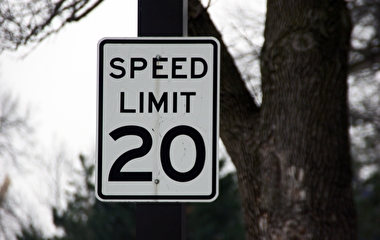
Reliable, consistent freeway travel times are crucial to the quality of life and economic health in busy metro areas such as the Twin Cities. For Twin Cities traffic managers to achieve travel time reliability, information is essential:
- Where, when, and why is congestion happening?
- Is congestion improving or worsening?
- What effect will heavy rain or snow have on traffic?
- How will a work zone or a major sporting event affect congestion?
- What impact did the pandemic have on freeway congestion?
An innovative tool developed by University of Minnesota Duluth (UMD) researchers is providing new insights into questions like these—helping Minnesota Department of Transportation (MnDOT) traffic managers effectively and efficiently manage traffic congestion and incidents. Additionally, the tool supports the agency in identifying and prioritizing future freeway improvement projects.
“The system we developed can very efficiently calculate travel-time reliability for any given corridor,” says Eil Kwon, a professor with the UMD Department of Civil Engineering and the project’s principal investigator.
This project’s aim was expanding an earlier version of the Travel-Time Reliability Estimation System (TeTRES). The goal was to broaden its usefulness and create a comprehensive system for MnDOT traffic managers and planners to use for assessing the reliability and traffic flow performance of freeway corridors. The original TeTRES (developed in a previous MnDOT-funded project) integrated data from multiple sources to estimate reliability measures for specific corridors under various operating conditions.
With TeTRES as a starting point, investigators added a new module to calculate how well traffic is flowing at a given time (traffic flow effectiveness). Next, they added historical traffic flow, weather, work zone, and special event data to the TeTRES database; this allowed them to calculate historical travel times on more than 100 routes at five-minute intervals and link them to conditions such as weather or incidents. Researchers also analyzed travel-time reliability trends for numerous routes and created a new measure called the vulnerability index, which indicates the combined level of reliability and congestion.
Finally, investigators explored a method to quantify the ability of a corridor to adapt and recover from congestion-causing disturbances—a measure known as operational resilience. They tested their model on three freeway segments and were able to identify a clear relationship between operational resilience and geometric factors such as the number of weaving sections (where merging and exiting lanes intersect) and the number of entrance and exit ramps on a given corridor.
The project produced a new software system that efficiently calculates travel-time reliability and analyzes key operational measures for any corridor in the Twin Cities metro area. It can also be used for applications such as identifying and prioritizing bottlenecks.
“These tools will help us identify not only the most problematic corridors for traffic congestion in the metro area, but the factors causing the problems,” says Brian Kary, director of MnDOT’s Regional Transportation Management Center. “The data will be invaluable for our business and planning processes.”
MnDOT has already begun using the data produced from this study in planning future projects. The agency will also develop staff expertise and process protocols to make the software more easily available to traffic planners and managers.
Writer: Megan Tsai


